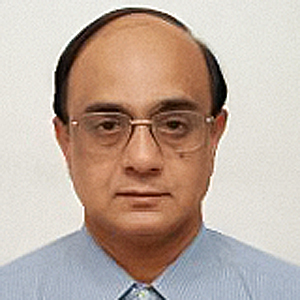India is facing tremendous challenges in rural electrification. What should grids there look like in the future? One study provides insight.
India has made tremendous strides in electrification in recent years. At the turn of the millennium, around 700 million people still had no access to electricity. This changed thanks to a massive state-run construction program. However, power failures are still a daily occurrence, in some areas electricity is available for just a few hours each day, and the population is growing so quickly that grid expansion is falling behind demand. In short, the energy hunger of this country of 1.3 billion has still not been satisfied. The IEA assumes that the electricity needs of the subcontinent will triple by 2040.
Currently, India is the third-largest producer of electricity in the world, after China and the US. Coal is still the number 1 energy source there, with a share of more than 50 percent. But things are changing in the energy mix. At the Paris Climate Change Conference in 2015, Prime Minister Narendra Modi announced the intention to increase the installed contribution of renew-able energies to 175 gigawatts by 2022. However, this also requires grids to connect the centers of generation and consumption.
A majority of renewable energy comes from solar and wind — from individual panels on a house roof to large, multi- hectare solar and off-shore wind parks. In this sun-soaked country, solar power can now be produced much more cheap ly than conventional or nuclear power. How ever, what is good for the environment does not always work with the exist ing grids.
That is why, in a study with the Indian Institute of Technology Madras (IITM), Reinhausen is investigat ing how the grids can be prepared for the upcom ing tasks given the assumption that all of today’s plans will soon be made obsolete by the growth of tomorrow. We asked Ajay Nilakantan, tap-changer business developer at Reinhausen, and Professor Dr. K. Shanti Swarup, Department of Electrical Engineering from IITM about the most important findings.
What challenges is India’s power grid currently facing?
PROF. DR. K. SHANTI SWARUP: The Indian power grid must become ever more reliable and resilient, on the one hand, while also responding flexibly to constantly changing requirements. We currently have to ensure stability for the voltage in the transmission grid. At the same time, bidirectional load flows are caused by generation with distributed renew able energies.

“The Indian grid must become more reliable and respond flexibly to constantly changing requirements.”Prof. Dr. K. Shanti Swarup of the Indian Institute of Technology Madras (IITM)
What’s more, the transmission companies have less direct influence on the generation units—in regard to both access points and types of operation. Therefore, the grid requires solutions that enable coordinated operation, flexible and dynamic control, optimal usage of the power produced, minimal losses and low footprint.
How do these problems manifest?
PROF. SWARUP: That is a very complex situation. Every method for creating flexibility in grid operation increases the demand for reactive power. Reactive power can be provided not only in an interstate transmission grid, but also in a regional high-voltage grid or even a primary distribution grid.
Then we also have to deal with dynamic voltage fluctuations due to the increased volatility in energy gen eration. This also increases the risk of overloading certain lines, which in turn leads to them disconnecting and therefore to unwanted power outages. And with regard to solar farms, the installed power may be high, but there is sometimes not enough line capacity to transmit it.
Are there solutions for this?
AJAY NILAKANTAN: We have three approaches here, in principle: The first is coordinated switching of OLTCs in transformers; the second is dynamic reactive-power compensation—regulated shunt reactors are an economical solution for this—and the third is the targeted use of phase-shifting transformers (PST), which actively control the power flow between grids or grid segments. In the study, we examined how these three approaches work.
REINHAUSEN INSIDE
Reinhausen offers an innovative portfolio for phase-shifter transformers and shunt reactors. It includes on-load tap-changers such as the VACUTAP® VR® and components such as voltage regulators and sensors. More info at:www.reinhausen.com/phaseshifter und www.reinhausen.com/shuntreactors
Click to learn more
How did you proceed in the study?
PROF. SWARUP: We concentrated on the effects on the voltage profile of integrating renewable energies, and on load-flow regulation in selected grid sections over a period of five to seven years. For this purpose, we analyzed the transmission grid in a five-state area and used special software to carry out model calculations and simulations for various operating conditions. In other words, we simulated how the five grids behaved over time with little or no renewable sources, and how they managed with a very high proportion of them.
What are the most important findings?
NILAKANTAN: Interestingly, we found that just the optimized use of existing equipment in combination with phase-shifting transformers or dynamic shunt reactors (variable shunt reactor—VSR) can help create flexibility in the grids and increase reserves in the existing grid. Even better coordination of the relevant transformers in primary substations alone leads to lower grid losses. This is an important finding—because grid expansion should also remain economical.
So, would phase-shifter transformers be crucial in creating flexibility in Indian grids?
PROF. SWARUP: Yes. We are looking to Europe, in particular, where phase-shifting transformers have a long tradition in the interconnected grid system (ENTSO‑E). In India, we can learn how the power flow can be controlled effectively between control zones and different voltage levels. However, thus far, we have only one phase-shifting transformer in all of India, in the Kothagudem thermal power plant in the state of Telangana. It coordinates the existing 220-kilovolt lines there. With 40,000 problem-free switching operations in four years, the experiences so far have been very promising.

“India can try to do things differently than Europe.”Ajay Nilakantan, Manager Business Development at MR
NILAKANTAN: But India can also try to do things differently than Europe. There, for regulatory reasons, phase shifters are usually located on national borders. From the view of network topology, that is not always the best place. India has the advantage of being able to position phase shifters exactly where they will optimize the load f low between large renewable-energy generating units and load centers.
What should operators be aware of if they want to use phase-shifter transformers?
NILAKANTAN: Phase-shifting transformers must always be adapted to the individual grid conditions. The physical requirements for the equipment are a result of these conditions. In addition to typical variables like nominal voltage, phase angle and short-circuit capacity, the operating schemes as well as logistical aspects such as transport also play an important role.
The design of the necessary tap changers is an important as-pect in ensuring functionality in grid operation. The tap changer influences the design of the active part of the transformer, and vice versa. In this kind of electric utility, close communication between the grid operator, transformer manufacturer and tap-changer manufacturer is indispensable.
What can grid operators learn from this study?
PROF. SWARUP: For developing countries with large growth, it offers insights into how the parties responsible for the setup, expansion and operation of grids can optimize costs throughout the life cycle of equipment through intelligent planning. For industrialized nations with a lot of aging infrastructure, the study also provides insight into asset management and enhancing the life of the transformer beyond its present capacity through targeted investment in new equipment.
MUMBAI EXAMPLE
With a population of 12.5 million residents, Mumbai is the largest city in India. When considered together with the agglomeration area, it is the sixth largest metropolitan region in the world. Energy provider Adani Electricity Mumbai Limited explains why dynamic variable shunt reactors (VSRs) are important in securing the power supply of this megacity:
“In a city like Mumbai, quality of power supply is critical considering the type of loads connected to the transmission system. One of the important criteria is that voltage remains in the allowable band. Considering the large existing and proposed 220 kV cable network, large voltage variation could be witnessed due to contribution of the significant capacitance effect of EHV cables. We therefore planned to install a variable shunt reactor in the network as it provides the flexibility to maintain the 220 kV voltage profile by fine control of the shunt reactor with the OLTC and avoiding frequent switching of the 220 kV reactor.”
YOUR CONTACT PERSON
Do you have more questions?
Then please contact Ajay Nilakantan:
A.Nilakantan@reinhausen.com
